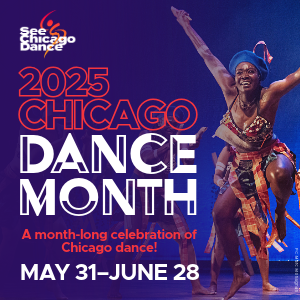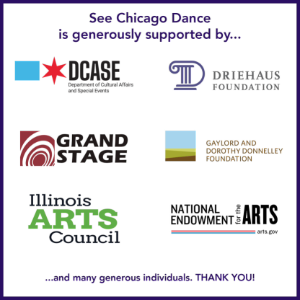May 20, 2025
By Tristan Bruns
On February 26, the Trump administration announced that it would end funding for medical programs in South Africa as part of the administration’s efforts to rein in spending through the United States Agency for International Development (USAID). The South African Ministry of Health has enacted plans to bridge the funding gap, but the question remains… Where’s this money going to come from?
From the arts, of course.
“We thought, ‘It won’t touch us; we’ll be fine; it’s just in the health sector,’” says Lliane Loots, founder and artistic director of Flatfoot Dance Company, a professional company of dancers who run community programs for youths and people with disabilities, and the JOMBA! Contemporary Dance Experience in Durban at the University of KwaZulu-Natal (UKZN).
JOMBA!, the longest running contemporary dance festival in Africa, has had a history of exchange with Chicago, hosting dance companies Deeply Rooted Dance Theater and MOMENTA Dance Company, presenting work by tap dancer Jumaane Taylor and collaborating with See Chicago Dance on the Critical Dance Writing Fellows writing mentorship program.
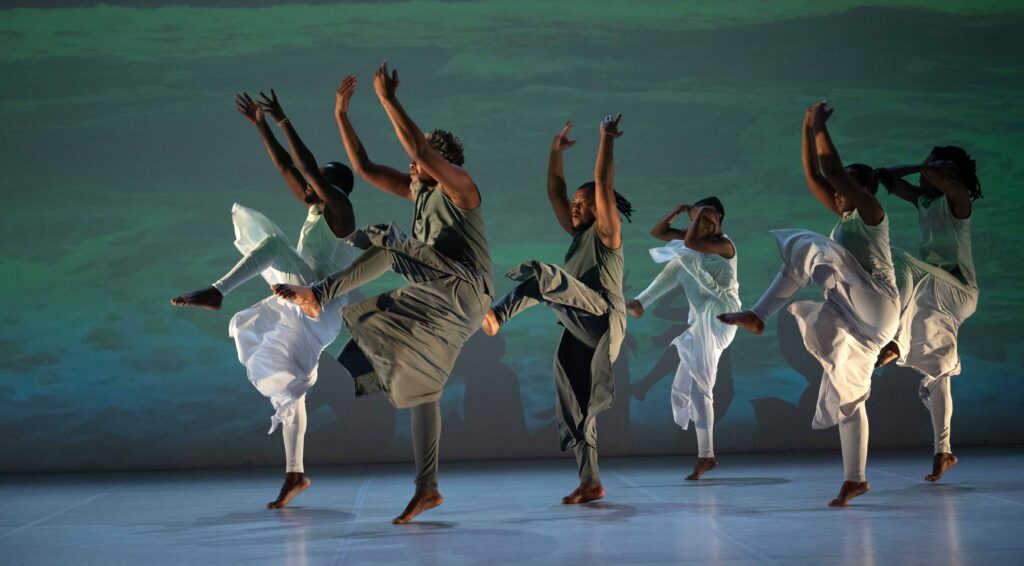
Flatfoot’s 7 salaried dancers and educators regularly tour across West, Central and East Africa, and internationally (like Chicago in 2015), and they are regarded as one of South Africa’s leading contemporary dance companies. Flatfoot runs communal dance projects in three local townships— Claremont, KwaMashu and Umlazi—that cater to youths age 5-23, and work with dancers with intellectual and physical disabilities. But now Flatfoot, their community programs and JOMBA! are in jeopardy as funding is being reallocated from the arts to the health sector.
“I don’t think there is one dance company in the world that survives without arts subsidies,” says Loots. “Dance is always particularly vulnerable—not just in these situations—particularly contemporary dance. It’s our classical forms that usually can harness lots of funding, and contemporary dance sits in this liminal space. There’s a very small pool of money that a lot of artists are trying to access and find.” Loots offers a sober analysis of the situation, “If funding doesn’t come in, yes, we will have to start making drastic changes to hours, conditions of work and to cut programs, and we really don’t want to do that. It’s a heavy burden to carry.”
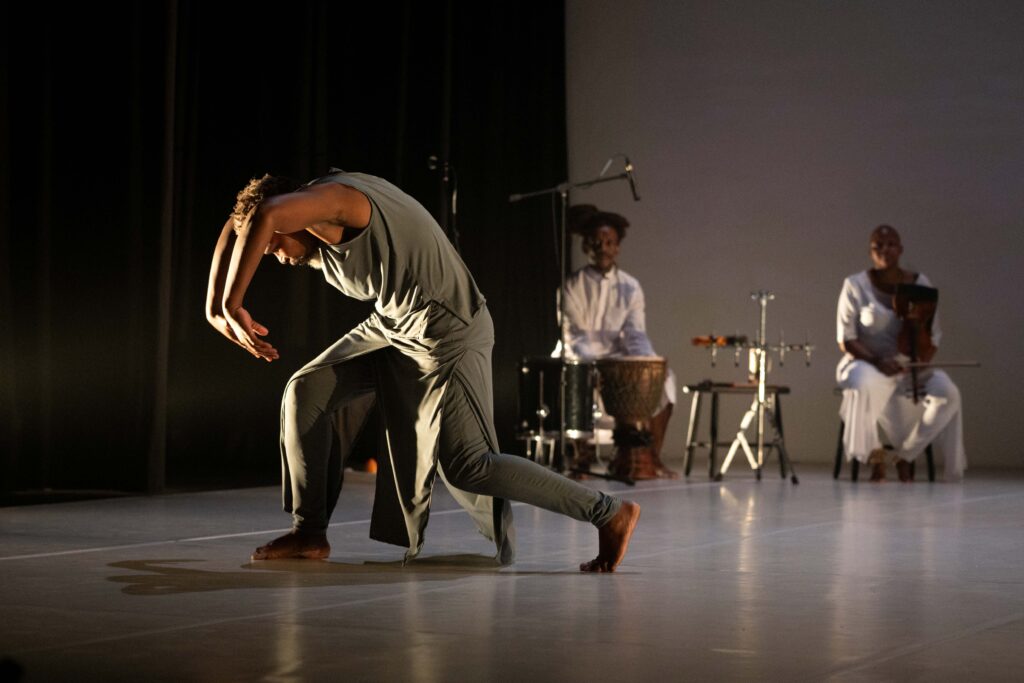
Flatfoot is running a crowdfunding campaign to “buy us some time” and keep the community-based programs running, which Loots admits is only a temporary solution. The company is also looking to private investors and corporate sponsorships to help maintain programming, but Loots laments that “the idea of getting one big lump sum of money does not exist anymore,” and that the new model is piecemeal.
Flatfoot’s programming is a direct response to South Africa’s history of racial Apartheid (1948-1994). De facto segregated communities experience extreme poverty and efforts to occupy children after school is a concern shared by many. “The schools in these areas… What they do is lock their gates at 3pm, so the kids have nowhere to go,” says Loots. “They go home or hang out on the street. [Flatfoot’s] projects become a way of giving these youth a place to be, somewhere loving, caring and focused on their community.” Flatfoot’s programs, run out of easy-to-access communal spaces, are open to any who wish to attend and are taught by professional dancers from the company who use dance as an “intervention methodology” to teach life skills in a creative way. While the programs are still scheduled to proceed, Loots worries about having to decrease instructor compensation and face a decline in quality venues or cut off branches of the program altogether.
Flatfoot’s programs for dancers with disabilities, including the Flatfoot Downie Dance Company that works with dancers with Down Syndrome, is a two-pronged effort that provides accessibility and fights stigma. “Disability is a very tricky terrain in South Africa,” says Loots, “and is seen through a cultural lens as ‘punishment.’ There’s a lot of hiddenness around it, a lot of taboo.” Flatfoot’s mission is “anyone who can dance, can dance,” and a lot of their efforts are about raising consciousness about disability. “It’s at the heart of our company, which started off about the idea of ‘who can dance?’ in terms of race and gender and access.” Like Flatfoot’s communal programs, Loots fears this arm of the company will also suffer from the trickle-down effect caused by the cuts to USAID.
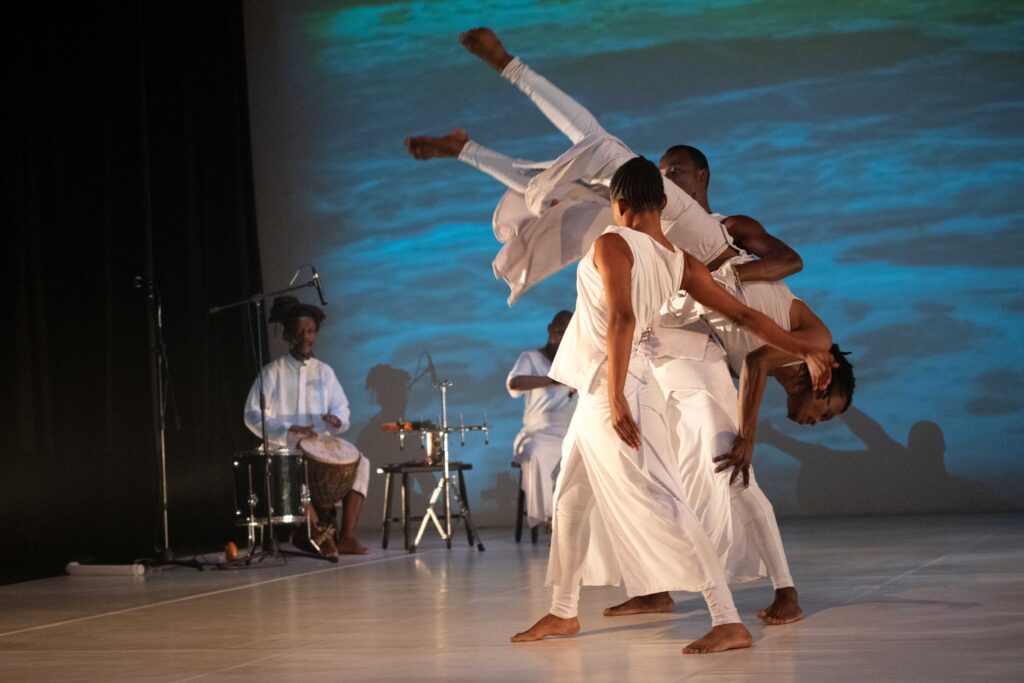
The JOMBA! festival is still scheduled to proceed but at a smaller capacity. “We’ve been told to try and find ways to cut programming,” says Loots. “Where we would be working in multiple venues, we’ll only be working in two; it means that certain companies that can’t bring their own funding won’t be attending. We will have a festival, but we will be more limited to who we host and how we host.”
Flatfoot’s story could be about any other independent dance company in South Africa right now as they scramble for social-corporate investments. “We’re all in a similar boat,” says Loots. “I think in another 4 or 5 months, the more devastating the impact is going to be.” Loots, having grown up during Apartheid, where being reliant on colonial powers to keep society running came with a cost, describes this “Neo-colonial way of punishing people” through funding “abhorrent.” But she is pragmatic. “At some level it’s a slap in the face, but it’s also a wake up for us working in decolonized spaces and how to run a dance company when one can no longer rely on the global north. I have to believe that it’s possible.”
Capricious cuts to USAID by the Trump administration have sown uncertainty about the future of medical research, health services and funding for the arts, both domestic and international. The hardships experienced by Loots and Flatfoot are only part of a campaign by the U.S. government that promises to punish anyone who does not align with the President’s interests.
For information on Flatfoot Dance Company’s crowdfunding campaign, click the link here.
To learn more about Flatfoot Dance Company and their programs, visit the website here.
For more information on the JOMBA! Contemporary Dance Experience, visit the website here.
Copyright 2025, See Chicago Dance, All Rights Reserved
